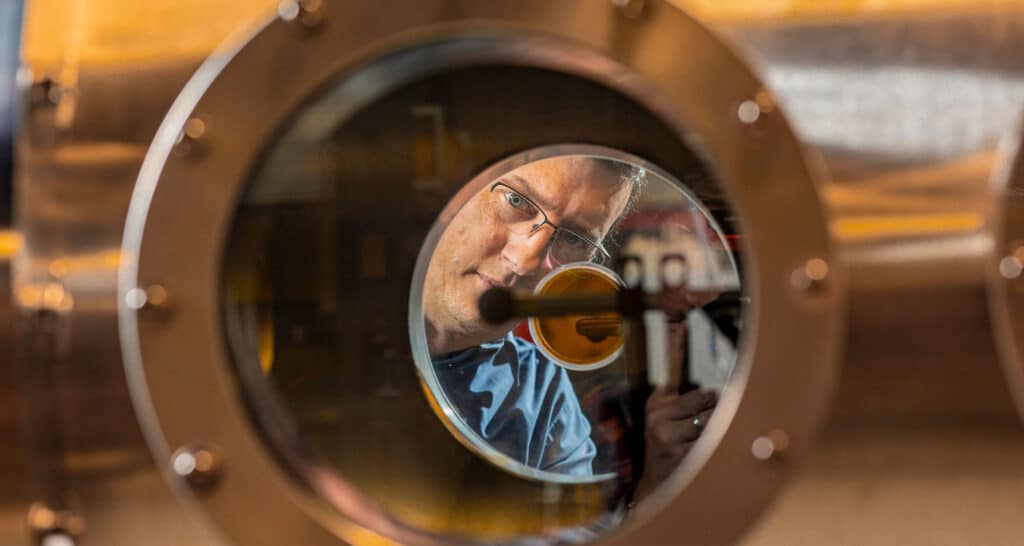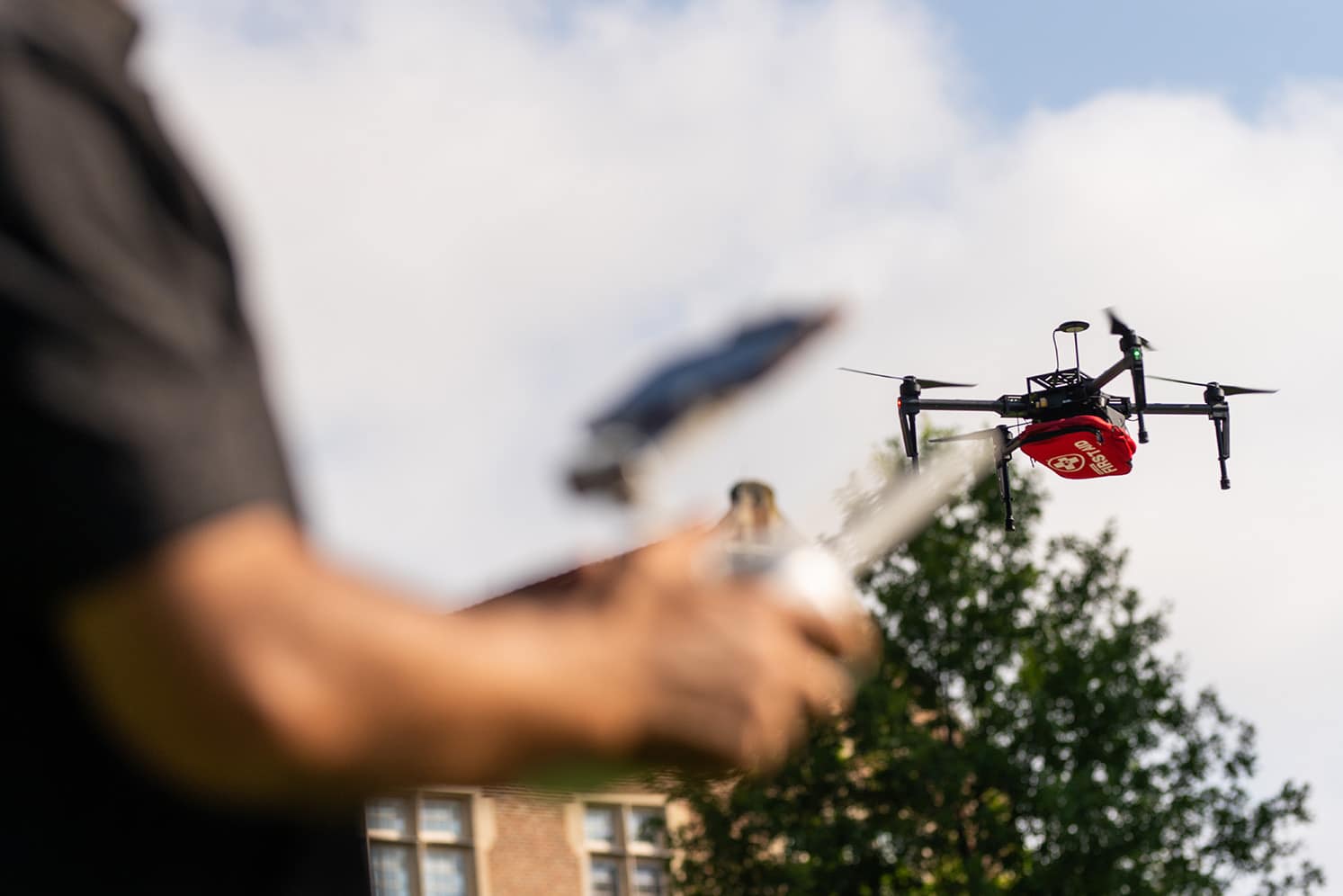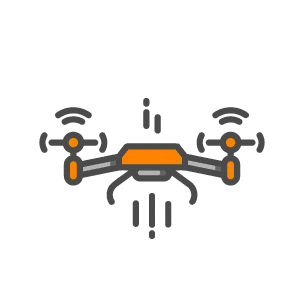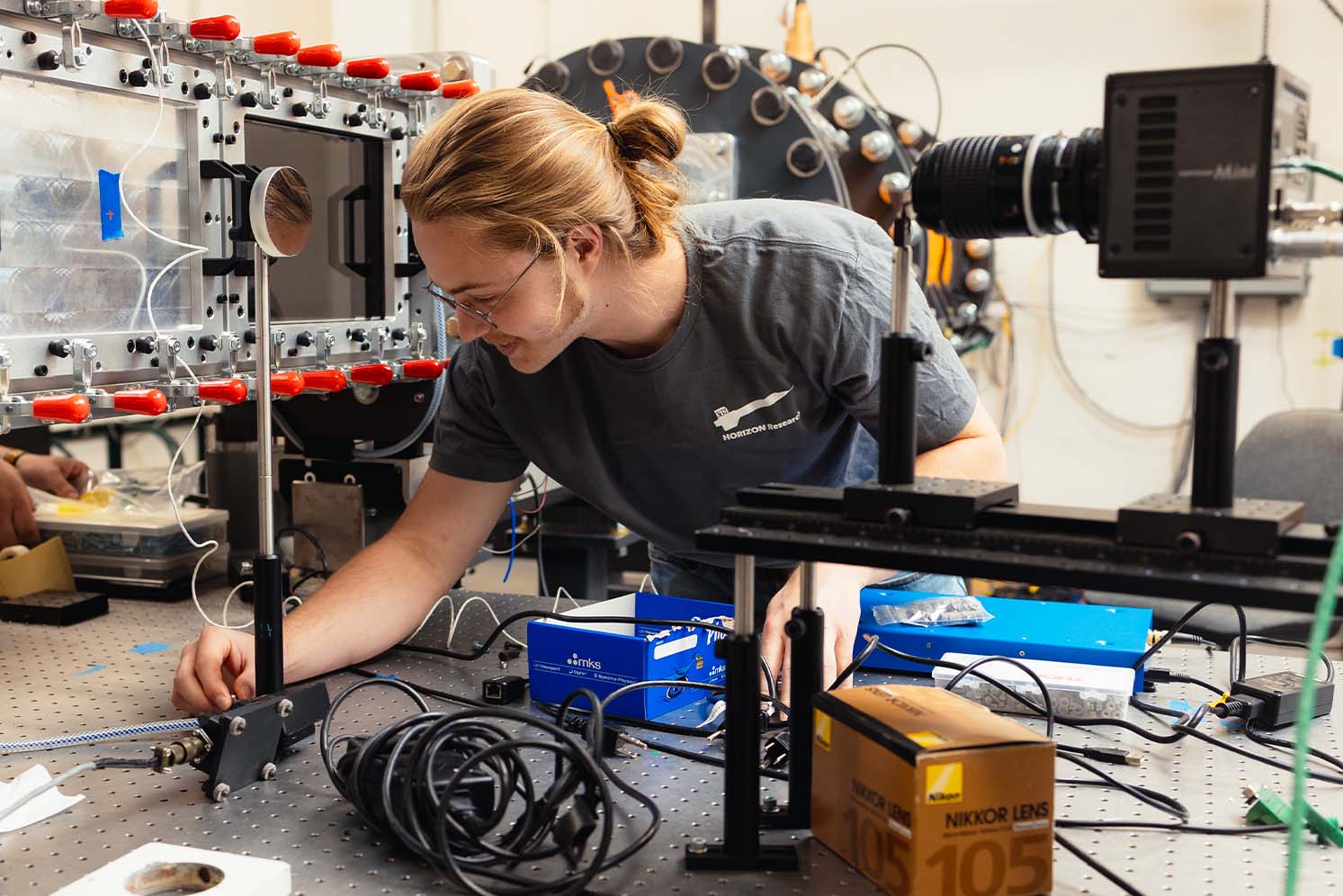
What is
Aerospace Engineering
Aerospace engineering involves the design, development, testing, and production of aircraft, spacecraft, and related systems and equipment. It combines elements of mechanical engineering, materials science, and computer science to innovate in areas such as aerodynamics, propulsion, and avionics.
WHY STUDY
Aerospace Engineering
Aerospace Engineering students at UT dive into specialized topics like propulsion, hypersonics, and orbital mechanics while gaining hands-on experience through partnerships with the UT Space Institute and connections to major aerospace organizations like NASA. The program’s strong research focus, faculty expertise, and history of producing industry leaders—including several NASA astronauts—make it an ideal launchpad for students passionate about flight, space, and innovation.

Interdisciplinary Examples
Aerospace engineers work across disciplines to reinvent the way we communicate, make greener,more sustainable travel a reality, and much more. Check out a few of the examples of how aerospace engineering is working as part of large teams to better humanity.
Remote Sensing and Earth Observation
Satellites engineered by aerospace teams collect climate, weather, and agricultural data. This work supports global efforts in environmental monitoring, disaster response, and resource management—demonstrating how aerospace technologies benefit life here on Earth.

Defense and Autonomous Systems
Aerospace engineers work closely with cybersecurity experts and systems engineers to create unmanned aerial vehicles (UAVs), hypersonic vehicles, and intelligent defense systems. These projects involve cutting-edge work in navigation, AI, and systems integration for both civilian and military applications.

Aviation and Transportation Sustainability
Collaborating with environmental scientists and mechanical engineers, aerospace professionals are developing cleaner aircraft engines, lightweight materials, and alternative fuels to reduce the environmental impact of air travel and improve the efficiency of global transportation systems.



Career
Outlook
Aerospace engineering offers exciting and high-impact careers in the design, development, and testing of aircraft, spacecraft, satellites, and defense systems. According to the U.S. Bureau of Labor Statistics, employment is projected to grow 8% between 2023 and 2033—faster than the average for all occupations.
- Starting Median Salary: $87,000*
- Mid-career Median Salary: $128,000**
- Number of Jobs: 73,000***

*These figures include the median salary of engineers with 0-5 years of experience. The data comes from payscale.com, July 2025.
**These figures include the median salary of engineers with 10+ years of experience. The data comes from payscale.com, July 2025.
***These figures are based on the projected number of jobs for aerospace engineers in 2033 by the U.S. Bureau of Labor Statistics.
